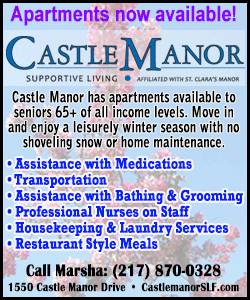|
 The New England Journal of Medicine has published a review for
doctors of the types of urgent problems they might encounter on
board and some of the challenges they'll face if they try to treat
them. The New England Journal of Medicine has published a review for
doctors of the types of urgent problems they might encounter on
board and some of the challenges they'll face if they try to treat
them.
Fortunately, the odds of having a medical emergency on a particular
flight are long - by one count, about 1 in 600.
In many cases there are no clear guidelines on whether an emergency
landing is warranted. Even if there is a doctor on the flight, the
decision is always up to the pilot.
Here's a rundown of some of the potential problems and options in
that "medically austere environment," according to Dr. Jose Nable of
the Georgetown University School of Medicine in Washington, D.C. and
his coauthors.
Cardiac arrest is the deadliest threat but, fortunately, the odds of
seeing one during a flight are small. They account for only 0.3
percent of medical emergencies.

Cardiopulmonary resuscitation (CPR) is one potential treatment and
the medical kit all airlines are supposed to have on board contains
equipment to help. Each plane is also supposed to have a
defibrillator to shock an errant heart back into a normal rhythm,
but unlike on TV, that often doesn't work. Thus, cardiac arrest is
responsible for 86 percent of in-fight events that result in death.
Heart attacks and related problems like angina represent 8 percent
of in-air emergencies. On-board medical kits have aspirin, which can
help break up a clot causing a heart attack. The kits also contain
nitroglycerin to relieve chest pain, "though they should be used
with caution," the doctors advise. There’s one type of heart attack,
for example, where giving nitroglycerin can drop blood pressure to
dangerously low levels and lead to shock.
Strokes or suspected strokes account for 2 percent of in-flight
medical emergencies. Administering oxygen is one option for doctors.
Giving aspirin is not because too many strokes are caused by
bleeding in the brain, and aspirin can worsen that problem.
However, stroke-like symptoms can also be caused by low blood sugar.
If an airline doesn't carry a glucose-monitoring kit - and some
don't because they're not required - passengers can be asked to loan
one.
“Altered mental status” covers a lot of problems and can include
complications from diabetes (responsible for 1.6 percent of
emergencies) along with seizures and their aftermath (5.8 percent).
Unfortunately, lower in-cabin air pressure and travel to a different
time zone can aggravate some existing problems. Again, a blood sugar
measurement may help.
[to top of second column] |

Fainting or feeling faint account for 37 percent of emergencies.
Lower cabin pressure and dehydration caused by the dry air in the
cabin, along with altered eating patterns and fatigue from delayed
flights may contribute, the doctors write.
Attending to blood sugar levels or letting the passenger lay on the
floor with feet elevated can help. But diverting the plane might be
warranted if the person is elderly with serious heart problems and
persistent symptoms.
Breathing difficulties make up 12% of in-flight medical emergencies.
Medical kits contain an albuterol inhaler.
Psychiatric emergencies account for 3.5 percent of incidents. The
stresses of flying these days don't help people with mental health
issues, the doctors note. Most travelers can sympathize.
"Because the medical kit does not contain sedatives, the use of
improvised physical restraints might be necessary to ensure the
safety of other passengers if attempts at deescalating the situation
and calming the passenger are unsuccessful," Nable and his
colleagues write.
The good news for passengers: in many cases there is a doctor on
board who can help. A 2006 survey of 191 medical emergencies found
that a doctor was on the plane for 45 percent of the calls. A
recommendation for an emergency landing was made in 3 percent of the
cases.


SOURCE: http://bit.ly/1VwD4Er New England Journal of Medicine,
online September 2, 2015.
[© 2015 Thomson Reuters. All rights
reserved.] Copyright 2015 Reuters. All rights reserved. This material may not be published,
broadcast, rewritten or redistributed. |